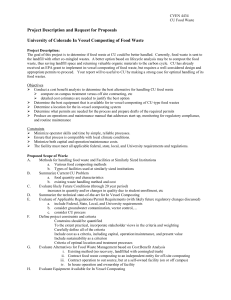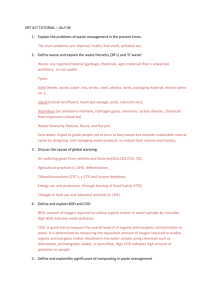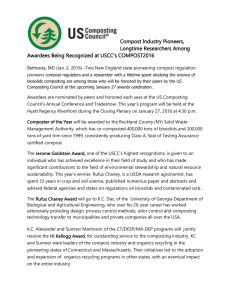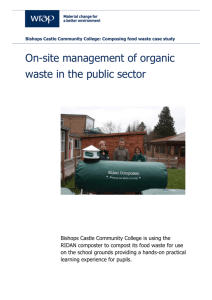182-Cecilia_EK - US Composting Council
advertisement
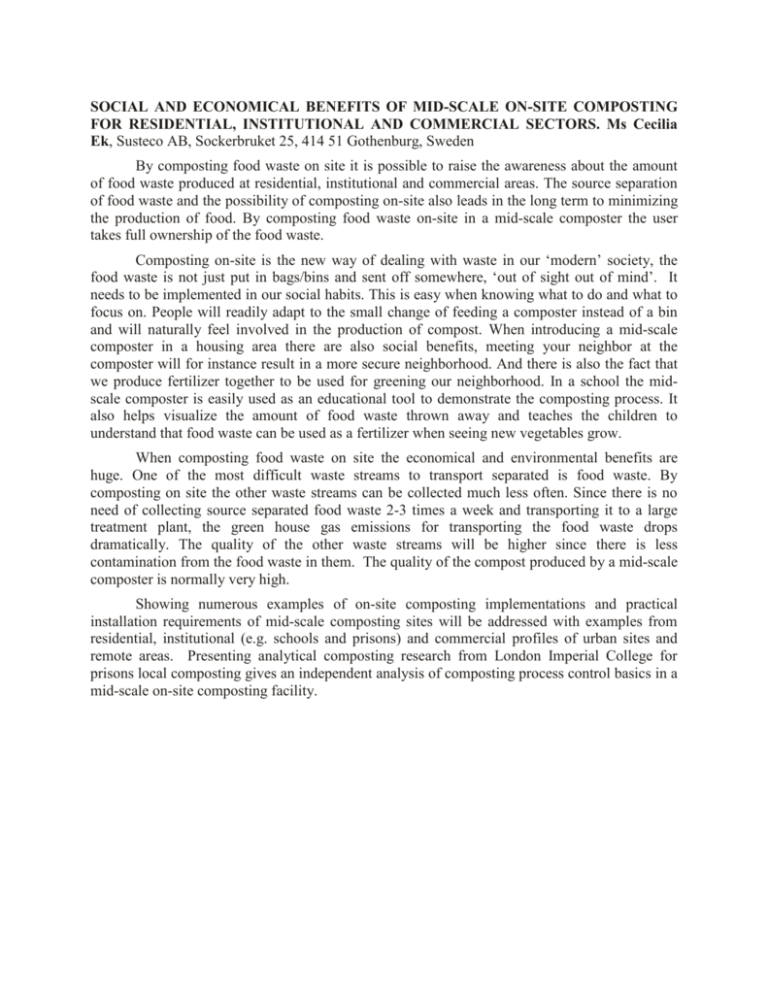
SOCIAL AND ECONOMICAL BENEFITS OF MID-SCALE ON-SITE COMPOSTING FOR RESIDENTIAL, INSTITUTIONAL AND COMMERCIAL SECTORS. Ms Cecilia Ek, Susteco AB, Sockerbruket 25, 414 51 Gothenburg, Sweden By composting food waste on site it is possible to raise the awareness about the amount of food waste produced at residential, institutional and commercial areas. The source separation of food waste and the possibility of composting on-site also leads in the long term to minimizing the production of food. By composting food waste on-site in a mid-scale composter the user takes full ownership of the food waste. Composting on-site is the new way of dealing with waste in our ‘modern’ society, the food waste is not just put in bags/bins and sent off somewhere, ‘out of sight out of mind’. It needs to be implemented in our social habits. This is easy when knowing what to do and what to focus on. People will readily adapt to the small change of feeding a composter instead of a bin and will naturally feel involved in the production of compost. When introducing a mid-scale composter in a housing area there are also social benefits, meeting your neighbor at the composter will for instance result in a more secure neighborhood. And there is also the fact that we produce fertilizer together to be used for greening our neighborhood. In a school the midscale composter is easily used as an educational tool to demonstrate the composting process. It also helps visualize the amount of food waste thrown away and teaches the children to understand that food waste can be used as a fertilizer when seeing new vegetables grow. When composting food waste on site the economical and environmental benefits are huge. One of the most difficult waste streams to transport separated is food waste. By composting on site the other waste streams can be collected much less often. Since there is no need of collecting source separated food waste 2-3 times a week and transporting it to a large treatment plant, the green house gas emissions for transporting the food waste drops dramatically. The quality of the other waste streams will be higher since there is less contamination from the food waste in them. The quality of the compost produced by a mid-scale composter is normally very high. Showing numerous examples of on-site composting implementations and practical installation requirements of mid-scale composting sites will be addressed with examples from residential, institutional (e.g. schools and prisons) and commercial profiles of urban sites and remote areas. Presenting analytical composting research from London Imperial College for prisons local composting gives an independent analysis of composting process control basics in a mid-scale on-site composting facility.





